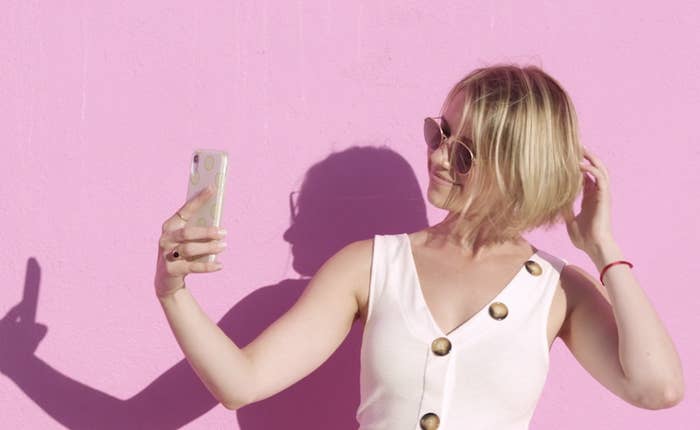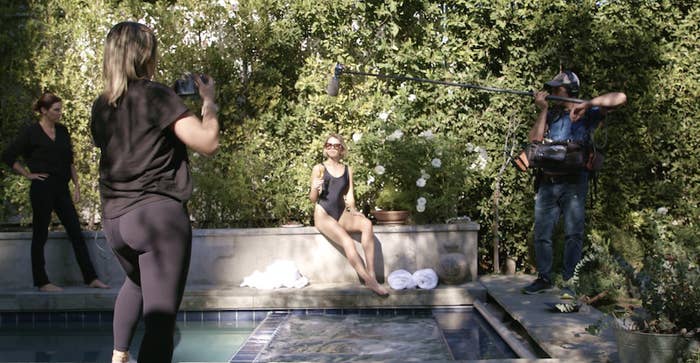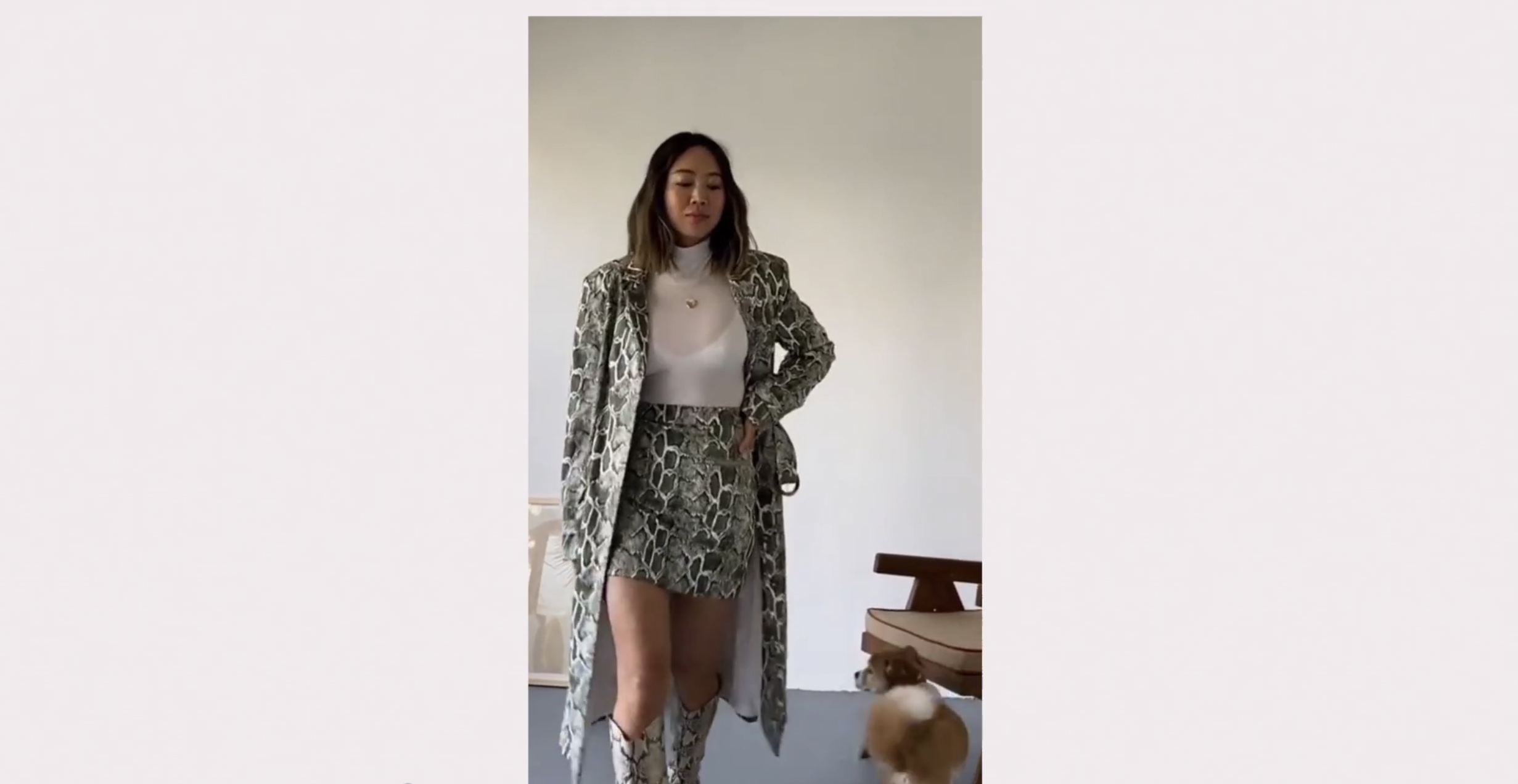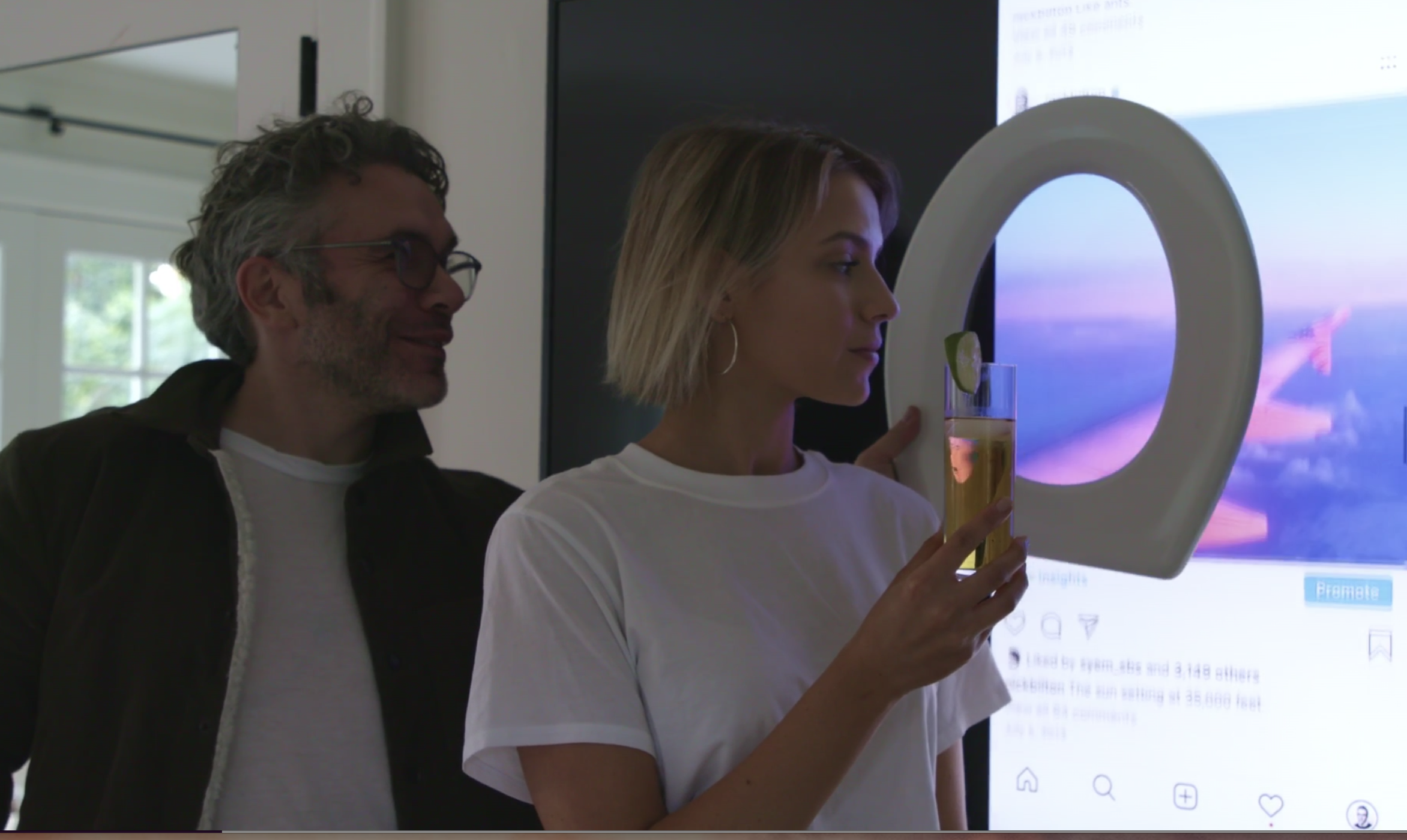
I’ve never watched a documentary that filled me with as much rage as Fake Famous, the new film ostensibly about the influencer economy streaming on HBO Max. And I’ve seen Blackfish.
Directed and narrated by tech journalist and Vanity Fair correspondent Nick Bilton, Fake Famous should have been right up my alley, as I cover internet culture for a living and I got a PR pitch touting it as “a fascinating look at social media influencers.”
Bilton and his team had an opportunity to examine this critically undercovered, multibillion-dollar industry thoughtfully and analytically, showing viewers how the people we follow online shape our culture and perceptions of ourselves.
Instead, the documentary mocks influencers for a grueling hour and a half, casting an entire ecosystem primarily built and run by women as, one male talking head put it, people who are “not employed” and “without a sense of purpose.”
The cherry on top of this whole thing? Influencers whose content was used as examples in the film told me that HBO never contacted them for permission to use their footage, or even let them know that the footage would be in the documentary. One influencer, Courtnie Hamel of @CourtandNate, told me that when she saw her home featured briefly in the film, she was upset by how “intrusive” it felt. Another, sewing and DIY content creator Mimi Goodwin from MimiGStyle, had no idea either. A spokesperson for Goodwin told me that they were completely unaware that her photo had been used “in such an unflattering and potentially defamatory manner” before I told them.
“Had we been notified, and told the purpose of the use, we would have denied the use of her likeness, as Mimi does not consider herself an influencer but a businesswoman who turned a sewing hobby into a multimillion-dollar business that is not modeled around fake comments or fake followers,” her spokesperson told me.
When I asked Bilton and the film’s producer, Annabelle Dunne, if they’d gotten permission from any of the influencers whose footage they used, they responded via a spokesperson that “Fake Famous incorporated material that is publicly available as part of its exploration of the industry of social media influencers.”

Bilton begins the documentary by telling us how people used to come to Los Angeles to visit important tourist sites, but now they just come to the city (pre-COVID) to take pictures in front of a pink, Instagram-friendly wall.
“It used to be that people got famous for things like music or acting or sports,” Bilton says, noting that the rise in 24-hour news cycles “opened a lot more avenues for fame,” as the media needed more and more content. This led to reality TV, and then influencers.
“Now we have a new kind of fame, one where you’re famous simply for a number,” Bilton says.
I’m sorry, is it 2006? Are we still trotting out this tired argument that unless you are an actor, singer, or athlete, you can’t be famous or influential? I would have hoped we left this perspective, which weirdly seems to only apply to women, in the early aughts.
We then get to the crux of the film. Bilton and his team have chosen three random people to see if they can make them famous, which in Bilton’s definition, means they have a lot of Instagram followers, real or not. At a casting call, the producers pass over musicians because “they could end up becoming famous for their talents, so we decided to go with some less obvious choices.” That is so rude, lmao.
The people they choose are stereotypical twentysomething LA transplants. (I say that lovingly, as someone who spent my early twenties there.) Dominique Druckman is an aspiring actor (apparently though, not a talented one) working at Lululemon, Wylie Heiner is an assistant to a Beverly Hills real estate agent, and Chris Bailey is trying to be a fashion designer.
Here’s where Bilton, a man I’m convinced has never watched an Instagram story in his life, and his team really show how little they have tried to understand this industry. Bilton insists that the only thing he needs to do to make his subjects “fake famous influencers” is to get them followers, comments, and likes. By saying this, he makes clear how much he fundamentally misunderstands what an influencer actually does and paints the industry with an offensively simplistic brush.
This is most obvious when a chorus of talking heads are asked to define an influencer. While journalists from the New York Times and Bloomberg describe the role as “half entrepreneur, half celebrity” and “presenting a lifestyle people want to mimic,” there’s an undercurrent of mockery among the other commentators. For example, writer and host Baratunde Thurston says he thinks an influencer is someone with a lot of followers, but adds it also “seems to mean not employed” or “person without sense of purpose.”
As they chat, clips from influencers’ social media flash across the screen. One clip is of Kayla Itsines, a woman who built a fitness empire worth hundreds of millions of dollars and made up of video workouts, a book, and gear via Instagram and YouTube. After one of the commentators describes influencers as “models who are not signed,” a video is shown of Aimee Song, a fashion blogger and designer who Business of Fashion named as one of the “people shaping the $2.4 trillion fashion industry.” We also see the Instagram profile page for Negin Mirsalehi, a Dutch influencer who turned her blog into a multimillion-dollar line of hair products, based on her family tradition of beekeeping.

Bilton recognizes none of this nuance, or any of the accomplishments of these successful women. He seems to believe that if his subjects get enough fake followers, they are on the same level as Itsines or Song. Bilton then buys followers and engagement for his influencers, as if this isn’t something that has been done since 2011. Soon, his fake influencers...have a lot of followers. Um, duh? You bought them! Just because it is possible to purchase followers online doesn’t mean that every person with a lot of followers did so, but that is what Bilton implies.
Having bought his subjects a bunch of bots, Bilton sets out to create a ton of fake content for his fake influencers with fake followers. “We’re simply doing what so many influencers do: We are faking it… Almost everyone does this in one form or another,” he says. All of Druckman’s photos are professionally shot to look perfect. In one, he has Druckman tag a photo of herself in a backyard as a fancy hotel to trick her following. In another, she lays her head in a kiddie pool to make it seem as if she is at a resort. In the most ridiculous photo, Bilton fakes being on a “private plane” by using a toilet seat as a window.
Bilton seems to want to emphasize how much work it takes to get a good shot, not to imply that there’s more to influencers than meet the eye, but to underline how vapid it all is. “People are buying lighting rigs for their average lives,” comments Thurston on the frivolity of it all.
Um, who says this is what influencers do? Where are the receipts for this? The evidence Bilton presents is one viral post by a YouTuber who pretended to be in Bali for a gag and the only actual influencer he bothers to interview, Liz Eswein, who runs an account called @newyorkcity. Eswein tells the audience that she continued to run her account, which features photos and memes about New York, while living for a time in *gasp* Los Angeles. Since her account is not based on her lifestyle, but rather is more of a collection of images about a place, it’s unclear how this is evidence that “every influencer fakes” their content, let alone that most influencers are regularly building elaborate fake private planes using toilet seats for clout. I’m not saying it doesn't happen, as one article citing a Twitter thread claims, or people don’t fake it ’til they make it, but Bilton offers me zero actual evidence most successful influencers do this with any regularity. But the average viewer is led to believe every person on Instagram is a phony, faking their lifestyle for free shit and “fame.”
All these antics serve to build up a straw man of what Bilton thinks an influencer is (superficial, fake, fame-hungry, vapid, pointless), so he can gleefully tear it down. You can feel Bilton’s derision through the screen as he zooms in on a bus full of women applying makeup and posing for the camera, after Druckman is invited on an influencer trip (“Poor Dom...really had to put her acting skills to the test,” Bilton says). Druckman marvels that the other women are networking during the trip and seem to be taking their jobs seriously. But we are quickly reminded that the whole thing is pointless. “These girls live, breathe, sleep, to take photos,” she says smugly.

What the documentary doesn’t seem to get is that perhaps Druckman is thriving as an influencer because she’s actually good at it. Druckman is cute, blonde, and white (the fact that this gives her a leg up in an industry where women of color often get shut out could make a great documentary, just saying), and she has a natural charm that radiates through her videos. In fact, once Bilton is forced to slow down the project due to the pandemic, Druckman actually starts to get real followers after she makes a funny ad for a bidet a company sends to her. The ad went viral, Bilton tells us, and it’s easy to see why. Druckman is gregarious and unassuming, laughing at herself as she does what she needs to do for the experiment. It’s almost like she has a talent. It’s almost like, rather than proving the vapid nature of the industry, Druckman has shown she possesses exactly the skills that help influencers build their businesses in the first place. It’s confusing for Bilton though, who had no idea why anyone would want to follow, in his mind, this normal, talentless woman.
“Dom started getting real followers because people holed up at home … assumed she was famous,” Bilton remarks, entirely missing the point.
Bilton ends the film by lambasting influencers for ignoring the pandemic (again painting the entire industry as monstrous off the actions of some bad apples) and pointing out, again, how everything about the industry is fake. He does this, in one shot, by showing a photo of an unidentified woman and drawing arrows pointing to her shadow and her ass, apparently to show us how the picture was photoshopped.
Look, I’m not going to pretend the influencer industry is perfect. This industry can be racist and sexist, and can lead to harmful body image for young people. Some Instagram influencers are bad people who deserve to be called out. Some are not. But how is that different from any other industry?
No group of professionals deserves to be reduced to its worst parts, to be painted with a broad brush of derision and scorn. I have dedicated my time and energy to covering influencers precisely because there are so many nuances to this industry. And I certainly have been critical of particular aspects of this field. But in order to fully analyze and critique something, you have to respect it and take it seriously. It’s clear Bilton does neither.
Instead, he would rather condescend and oversimply, while taking hardworking people’s content without permission for good measure, in order to gain recognition and clout.
Sounds pretty fake to me.
